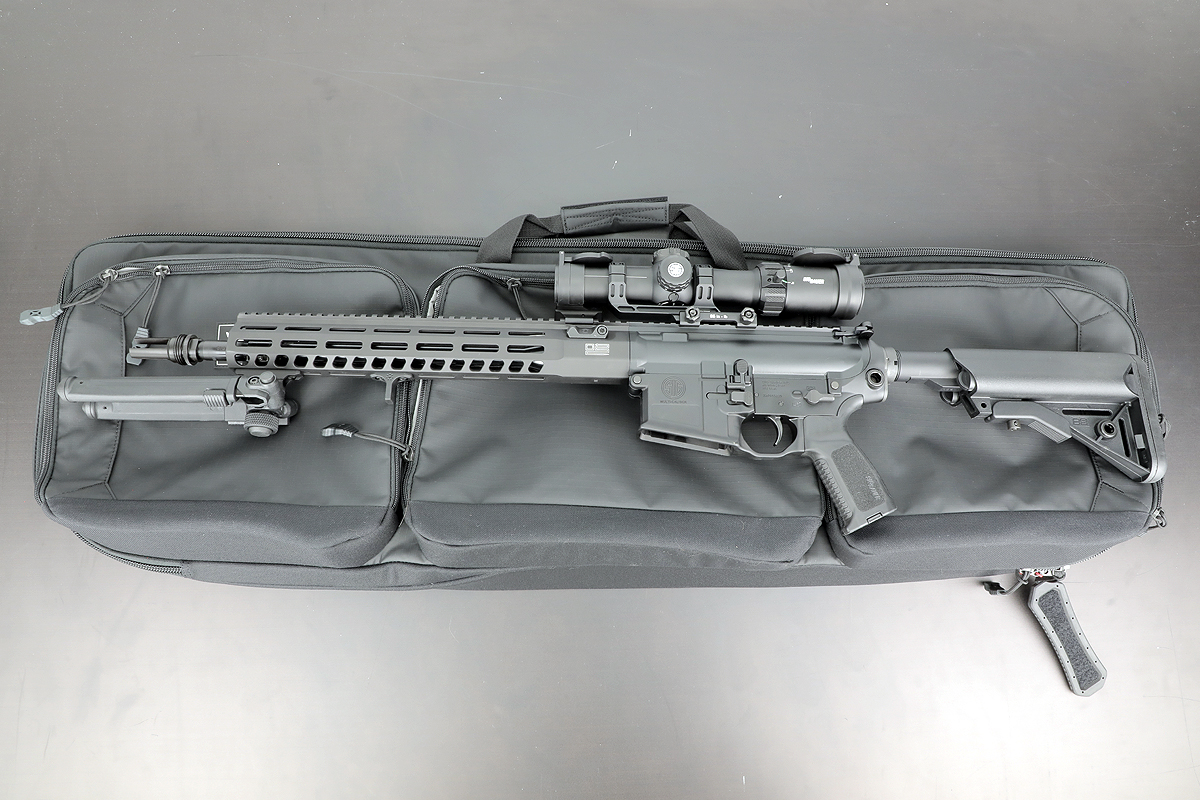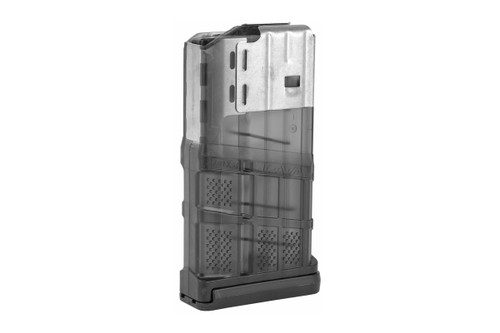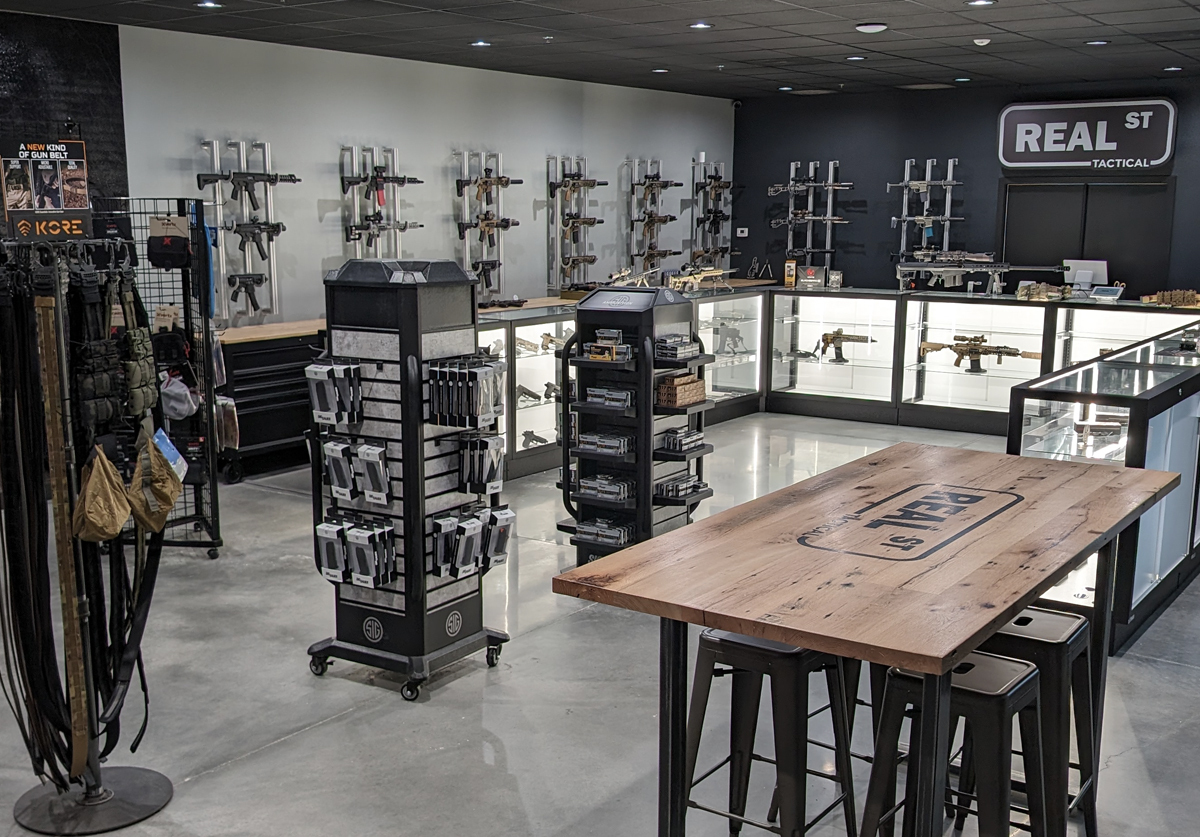-
Sig Sauer
SKU: R716I-16B-TRD
Sig Sauer 716I Tread 16" AR10 Rifle 7.62x51 7.62 NATO
Caliber: 7.62 NATOBarrel Length: 16"Barrel Twist: 1:10Operating System: Direct ImpingementColor: BlackWeight: 8.5lbs (3.85kg)$1,499.993 in stock -
SilencerCo
SKU: SU4735
SilencerCo Omega 36M Suppressor 5.56 7.62 300 BLK 9mm .338 Charlie ASR
Caliber: 9mm / 5.56 / 300 Blackout / 7.62x51 NATO / .308 WinMaterial: Cobalt 6, Inconel, Titanium, & 17-4 SSAttachment: Charlie ASRWeight: 9.8 – 12.5ozLength: 4.90 – 6.85″Diameter: 1.57″Note: Muzzle Device Adapter sold separately$993.00 -
Sig Sauer
SKU: SOR1P100
Sig Sauer Romeo1 Pro 1x30mm Red Dot Optic 3 MOA Red Dot - Black
Magnification: 1xColor: BlackReticle: 3 MOA Dot (Red)$349.99 -
Vertx
SKU: F1 VTX5713 IBK
Vertx VTAC 42" Rifle Case Gun Bag
Color: BlackStyle: Single Rifle CaseDimensions: 40.6"W x 11.8"H x 5.5"$189.99Only 1 in stock -
$104.45
-
B5 Systems
SKU: SOP-1074
B5 Systems SOPMOD Stock Mil-Spec Black
Color: BlackFits: Mil-Spec Buffer Tube or Adapter$95.00 -
Dead Air
SKU: DA301
Dead Air Keymo Flash Hider 1/2x28 5.56 Suppressor Adapter Muzzle Device
Caliber: 5.56 NATOAttachment: 1/2x28 to Dead Air Keymo$89.002 in stock -
Dead Air
SKU: DA302
Dead Air Keymo Flash Hider 5/8x24 7.62 Suppressor Adapter Muzzle Device
Caliber: 7.62Attachment: 5/8x24 to Dead Air Keymo$89.00Only 1 in stock -
Dead Air
SKU: DA101
Dead Air Keymo Muzzle Brake 1/2x28 5.56 Suppressor Adapter Muzzle Device
Caliber: 5.56 NATOAttachment: 1/2x28 to Dead Air Keymo$89.00Only 1 in stock -
SilencerCo
SKU: AC591
SilencerCo ASR Muzzle Brake 5/8x24 Charlie Suppressor Adapter Muzzle Device for Omega 36M Chimera 300 Hybrid 46M
Caliber: .300 Blackout / .308 WIN / 7.62x51Attachment: 5/8x24 to Charlie ASR$79.90 -
Sig Sauer
SKU: SOR2M101
Sig Sauer 45 Degree Canted Universal Offset Mount 1913 Picatinny
Color: BlackFits: Trijicon, Sig, Holosun, Leupold to 1913 RailOffset: 45deg$69.99 -
Lancer
SKU: L7-25-SMK
Lancer 25rd L7 Advanced Warfighter L7AWM AR10 Magazine Translucent Smoke 7.62 .308
Capacity: 25Caliber: 7.62x51 NATO / .308 WinColor: Translucent SmokeFits: AR10$50.99 -
Lancer
SKU: L7-20-SMK
Lancer 20rd L7 Advanced Warfighter L7AWM AR10 Magazine Translucent Smoke 7.62 .308
Capacity: 20Caliber: 7.62x51 NATO / .308 WinColor: Translucent SmokeFits: AR10$47.99 -
Lancer
SKU: L7-10-SMK
Lancer 10rd L7 Advanced Warfighter L7AWM AR10 Magazine Translucent Smoke 7.62 .308
Capacity: 10Caliber: 7.62x51 NATO / .308 WinColor: Translucent SmokeFits: AR10$42.99Only 1 in stock -
$30.006 in stock





















